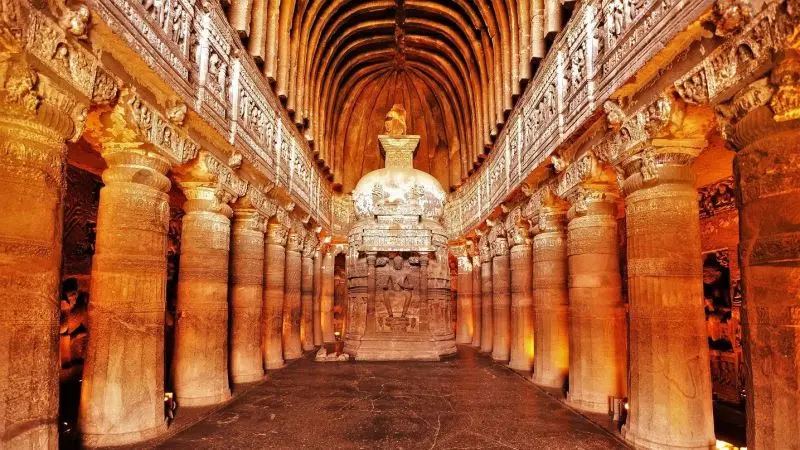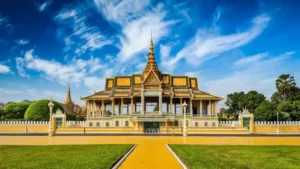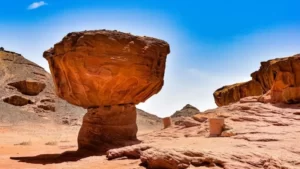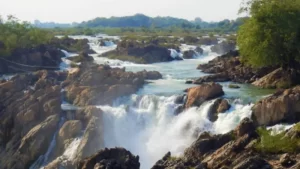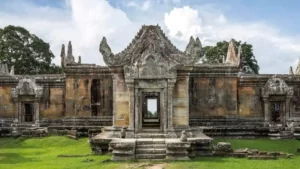The Ajanta Caves, a UNESCO World Heritage site located in Maharashtra, India, are a testament to the rich artistic and cultural heritage of ancient India. These magnificent caves, carved into the rocky hillsides, showcase exquisite rock-cut Buddhist sculptures, paintings, and murals that date back to the 2nd century BCE and the 6th century CE.
The caves have not only attracted art enthusiasts and historians but also captivated the hearts of countless visitors who are drawn to the profound beauty and spiritual aura that permeates this unique site.
In this article, we will delve into the history of Ajanta Caves, explore why it is worth visiting, discuss the location and route, highlight the best time to visit, and discover the remarkable treasures that await within these caves.
History
The Ajanta Caves have a fascinating history that spans several centuries. The caves were constructed in two phases, with the earlier caves being built during the Satavahana dynasty (2nd century BCE – 2nd century CE) and the later caves being added under the patronage of the Vakataka dynasty (5th – 6th century CE).
These caves served as monastic retreats for Buddhist monks and were centers of religious and artistic activities. Over time, the caves were abandoned and eventually forgotten until they were rediscovered by a British officer named John Smith in 1819.
Why Visit
Visiting the Ajanta Caves is a truly transformative experience that offers a glimpse into the artistic prowess and spiritual devotion of ancient India. The caves are a masterpiece of rock-cut architecture and are renowned for their exquisite sculptures, paintings, and frescoes.
The intricate detailing and vibrant colors of the artwork are awe-inspiring, leaving visitors marveling at the level of craftsmanship achieved by the ancient artisans.
Beyond the artistic appeal, the caves also provide a serene and tranquil atmosphere, making it an ideal place for introspection and spiritual contemplation. The sheer historical significance and cultural heritage of the Ajanta Caves make it a must-visit destination for anyone interested in ancient civilizations and art history.
Location and Route
Ajanta Caves are located in the Aurangabad district of Maharashtra, India. The nearest airport is the Aurangabad Airport, which is well-connected to major cities in India. From Aurangabad, the caves are approximately 100 kilometers away and can be reached by road. Private taxis and buses are available for transportation to the site. It is advisable to hire a local guide who can provide insights into the history and significance of each cave, enhancing the overall experience.
When to Visit
The best time to visit Ajanta Caves is during the winter months of November to February when the weather is pleasant and conducive to exploration. The scorching summers and heavy monsoon rains make the site less accessible and may hinder your overall experience. It is also recommended to visit early in the morning or late in the afternoon to avoid crowds and to appreciate the artwork in the best possible light.
What to See
The Ajanta Caves comprise a total of 30 rock-cut caves, each offering its own unique charm and artistic treasures. Cave 1 is the most famous and grandest of all, known as the Great Chaitya. It features a large stupa and intricate carvings depicting various Buddhist motifs.
Cave 2 is another notable cave that showcases stunning murals depicting the Jataka tales and the life of Buddha. Other significant caves include Cave 16, which features a remarkable sculpture of the reclining Buddha, and Cave 17, which houses the famous ‘Temptation of Mara’ painting.
The paintings and sculptures within the caves portray scenes from Buddhist mythology, royal courts, and everyday life, providing a valuable insight into the cultural, social, and religious practices of ancient India. The delicate details, vibrant colors, and skillful use of light and shade make these artworks truly mesmerizing.
Conclusion
A visit to the Ajanta Caves is like stepping into a time capsule that preserves the artistic and spiritual heritage of ancient India. The combination of intricate rock-cut architecture, breathtaking sculptures, and vibrant paintings creates an enchanting ambiance that continues to captivate visitors from all over the world.
Exploring the caves allows us to appreciate the remarkable artistic achievements of our ancestors while offering a profound spiritual experience that transcends time. Whether you are an art enthusiast, history buff, or a seeker of inner peace, the Ajanta Caves are a destination that should be on every traveler’s list.
